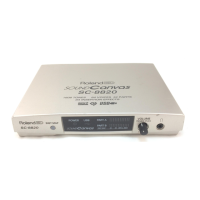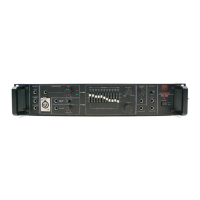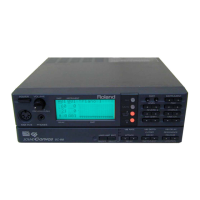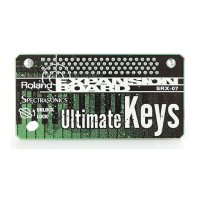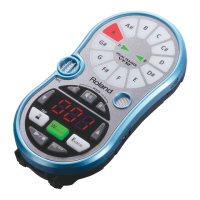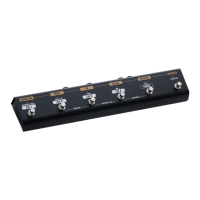TVF (filter)
1) Fil, selects between LPF (Low Pass filter), BPF (Band Pass Filter), or a HPF (High Pass
Filter.
2) Cut, sets the cutoff frequency.
3) Res, sets the resonance of the filter you’re using.
TVA (Envelope)
1) Lev, affects the volume for the Partial. As you lower it, you’ll notice that the amount of
dynamic response set to the velocity will decrease.
2) Rel is the release time for the envelope. As you increase the value you’ll notice an increase
in the length of time of the sample sustains after you release the key.
3) Vel, is the velocity response. This will change the keyboard response of the Velocity curve
that is assigned to the sample. You will see a small display next to the curve you selected.
Looping
1) You can select the Loop Type at the bottom of the screen with the function buttons. By
pressing the F1 button you can select 1Shot, Forward+1Shot, Alternating (forward and
reverse) RevOne, Rev, Fwd or Fwd+R.
2) By pressing the Shift button, then F3, you can go to the Loop parameter page and
change the sample, loop start and end parameters.
Performance EQ
Performance EQ allows you to boost or diminish selected bands of frequencies on a specific Patch in a
Performance. You can assign the EQ to be routed to a specific output or stereo pair, depending on your
output configuration. There are eight channels of 2–band EQ.
1) From the Performance Play page press Shift, then press Jump.
2) Scroll down with the cursor arrow to 20) Perform EQ, then press S1. You will come to the
Perform EQ page.
3) Highlight the space above the EQ parameters and select the Patch by turning the
Value/Menu knob.
4) After selecting the Patch, you can choose whether or not the EQ is assigned in stereo or
individual modes. By pressing the F1 button, you can select between the two modes.
5) Move your cursor to the output that affects your Patch. If you set-up the Patch on the
Performance Play page to stereo output A, then you should change your output to “A” on
the Performance EQ page.
6) Select with your cursor either H.F. (High Frequency) or L.F. (Low Frequency) and then
select the particular frequency band you wish to change by turning the Value/Menu knob.
7) Move the cursor to either H.G or L.G., depending on whether you picked H.F. or L.F.
beforehand. You can now change the emphasis of the EQ affecting your Patch with your
Value/Menu knob. To hear the effect of the EQ, switch between EQ On and Bypass.
Deleting Sounds
You can delete Volumes, Performances, Patches, Partials, and Samples from the internal memory by
selecting Delete in the Command function within most of the modes on the S-760. After highlighting
Delete press S1. Choose the Target (TG), press S1. Select a target from the menu that will appear and
press S1 to mark the target(s) you wish to delete. Press F3 to execute. Deleting sounds from RAM
deletes the data from memory, then reorganizes the remaining sounds in memory. Depending on the
location and size of the file being deleted, this may take some time to perform.
© 1995 Roland Corporation U.S. SN29 S-760 Supplemental Manual Page 9 of 17

